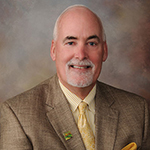California’s inland region key to statewide vitality
California’s inland region key to statewide vitality

When it comes to investing in California, the smart money is heading inland, home to one of the most robust employment, innovation and opportunity centers in the United States. That might surprise those who still view the Inland Empire and Central Valley as distant outposts — barely mentionable in the same sentence as coastal California. In fact, not only has the inland region long served as the industrial and agricultural backbone of the state, it’s where investors are placing their bets and, in the process, helping build what we can now legitimately brand as the new California.
Inland California, which includes the Inland Empire and Central Valley, is home to 30% of the state’s population, and growing significantly faster than the state as a whole. The economic output of Inland California is also massive. At $436 billion in GDP (2015), the region’s economy equals the 15th largest state in the United States and the 25th largest country in the world.
We’re also younger, with one third of the population is under the age of 25, providing employers here with a pipeline of workers they won’t find anywhere else.
These are some of the reasons why so many emerging industries, from healthcare and transportation to alternative energy and advanced manufacturing, look to places like the Inland Empire for their next wave of major investments.
The state sees it too, which is why the California Air Resources Board (CARB) is investing more than $400 million in a state-of-the-art vehicle-emission testing and research facility at the University of California Riverside.
In San Bernardino County, state grants will help pay for what will ultimately become North America’s first zero-emission passenger trains as part of the Redlands Passenger Rail System.
In addition, the region has won two major grants from the Strategic Growth Council, totaling over $55 million in investments that provide for affordable housing and community development in key transit corridors. More broadly, these kinds of investments represent a growing recognition — in the public, private and philanthropic sectors — of how important the Inland Empire is to the state’s long-term vitality.
Indeed, private philanthropic foundations have significantly increased their investment in the Inland Empire over the past several years, from $61.3 million in 2013 to $115 million three years later. This increase has mostly been driven by investments from outside the region that more than doubled, from $46 million to $98 million. Our Center for Social Innovation was created from these kinds of investments, with nearly $2 million in seed investments from the Wallace H. Coulter Foundation, James Irvine Foundation, and Weingart Foundation in 2018, and an additional $1.2 million since.
We are not resting on our laurels, however, and neither is the region. Last month, officials and stakeholders from throughout the Inland Empire, Central Valley and the state gathered in Riverside for the first regional summit of Inland California Rising – an unprecedented effort to find common cause and attract even more investments to regions like ours that represent the future of California.
Importantly, we were not simply talking amongst ourselves. Senior leaders from the Newsom administration, from economic development to higher education and planning, used the occasion to announce a major statewide initiative called Regions Rise Together where Inland California will play a significant role.Foundation leaders attended, too, including four CEOs and senior program officers from Southern California funders like Weingart, to statewide funders like the James Irvine Foundation, to national and global funders like the Chan Zuckerberg Initiative and the Bill and Melinda Gates Foundation. All are interested in learning about the progress being made, and are committed to increasing public, private, and philanthropic investments in the Inland Empire and Central Valley. And we are already seeing tangible signs of progress, such as the creation of Opportunity Zone fellowships from FUSE Corps that will benefit Fresno and the Inland Empire alike, and engagement from Milken Institute and others to build a stronger tech ecosystem in the region.
California’s future is inland. Critical investments in the region’s innovation economy, civic leadership, health, and education, are vital to ensuring prosperity in the region and fulfilling the promise of “California for all.”
Original post can be found at https://www.dailybulletin.com/2019/06/21/californias-inland-region-key-to-statewide-vitality/?fbclid=IwAR31dNgtm3x94zD9OigyAu4MQtjo9hvZ-Csy5HC5FPLIUA5LScBYzMpv3MM


